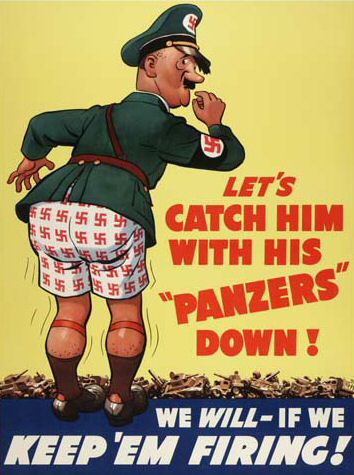Political cartoons and propaganda posters have been commonplace since the 19th century. Many newspapers used political cartoons as a way to express the publisher’s opinions about whatever the hot issue of the day was, and propaganda is simply an extension of that, with political parties using illustrations to increase awareness of their agenda.
One of the earliest, widely recognized political great cartoons is Benjamin Franklin’s “Join or Die” image, which dates back to 1754. This cartoon used the metaphor of a snake to describe the need for unity – the states must join together, or die.

It wasn’t until the late 19th and early 20th century that artists started to produce the kind of political commentary cartoons and propaganda pictures that we are so familiar with today. This cartoon, published in The World in 1915 during World War I, shows “British Lion” and John Bull crying as they look at a paper detailing the American Protest. American cargo ships are docked in the harbour behind them. The caption, Hurting their Feelings, provides a cutting commentary on the events of the time.
During World War II, color propaganda illustrations and posters were popular, and cartoons were slightly more risque and daring. This American propaganda poster depicts an embarrassed Adolf Hitler wearing Swastika-covered boxers, surrounded by destroyed Panzer tanks. The pun, “catching him with his Panzers down” is quite simplistic, but it is an eye catching poster that did the job well.
We are fortunate enough to live in a time where propaganda posters are no longer needed, and artists have a lot more freedom to speak about their political opinions. Cartoons are still used for public health awareness, however, and propaganda posters such as the British “Keep Calm and Carry On” posters, or similar parodies with modern slogans, are popular retro decorative items.


